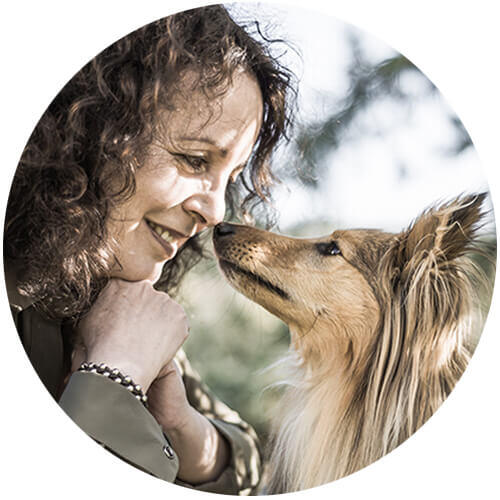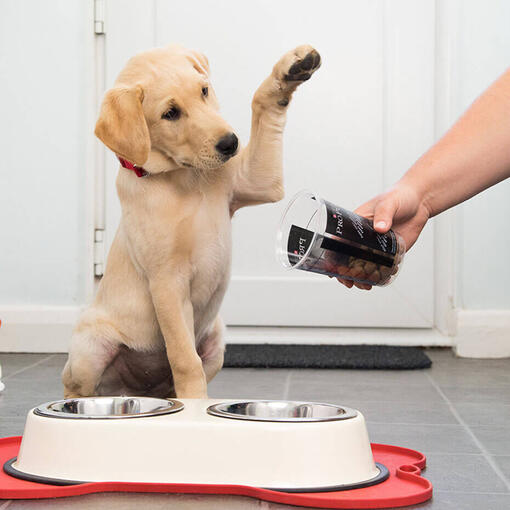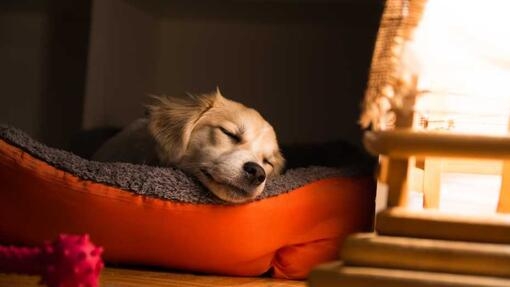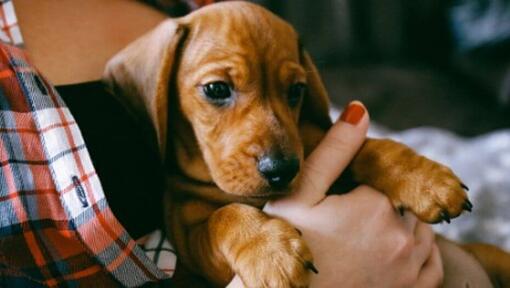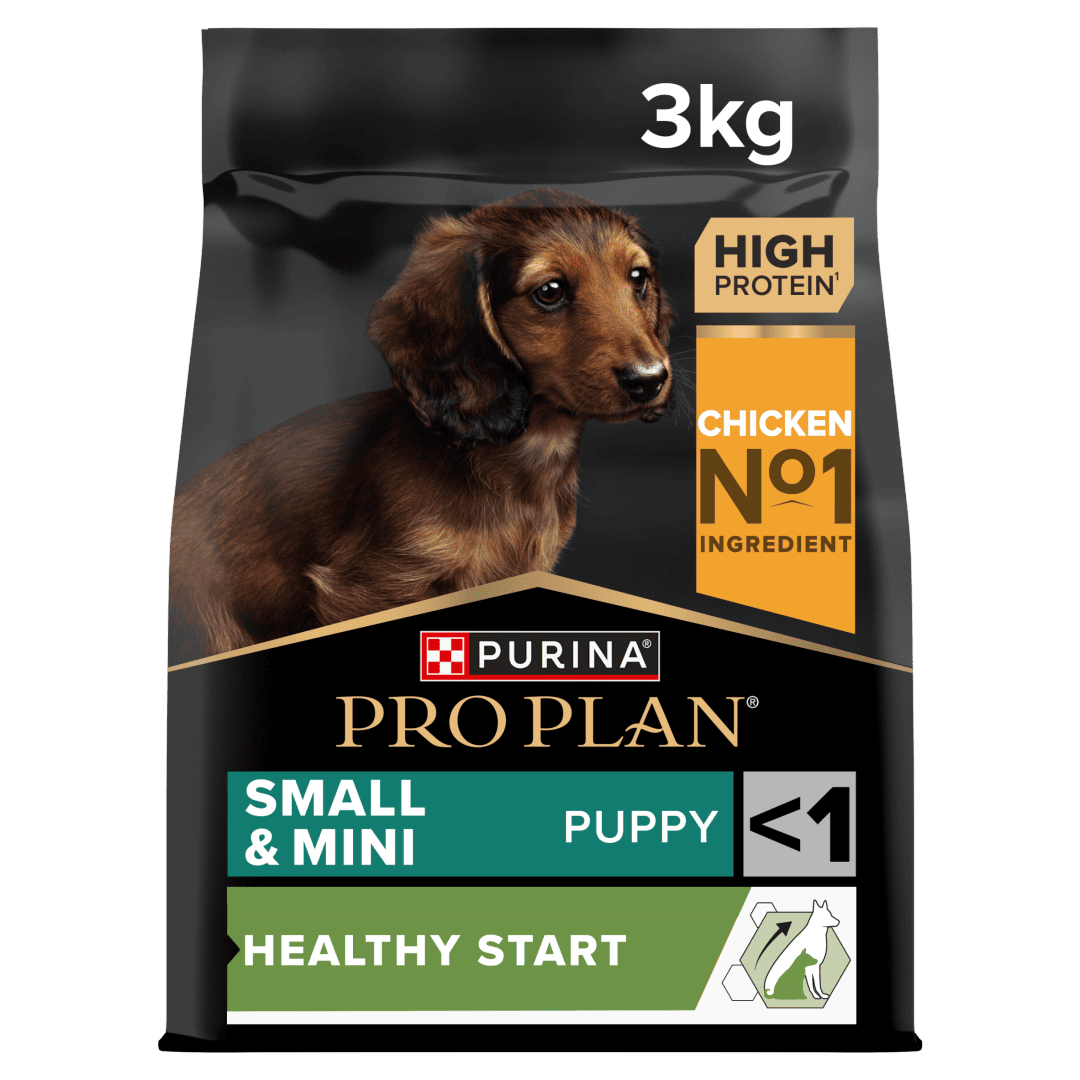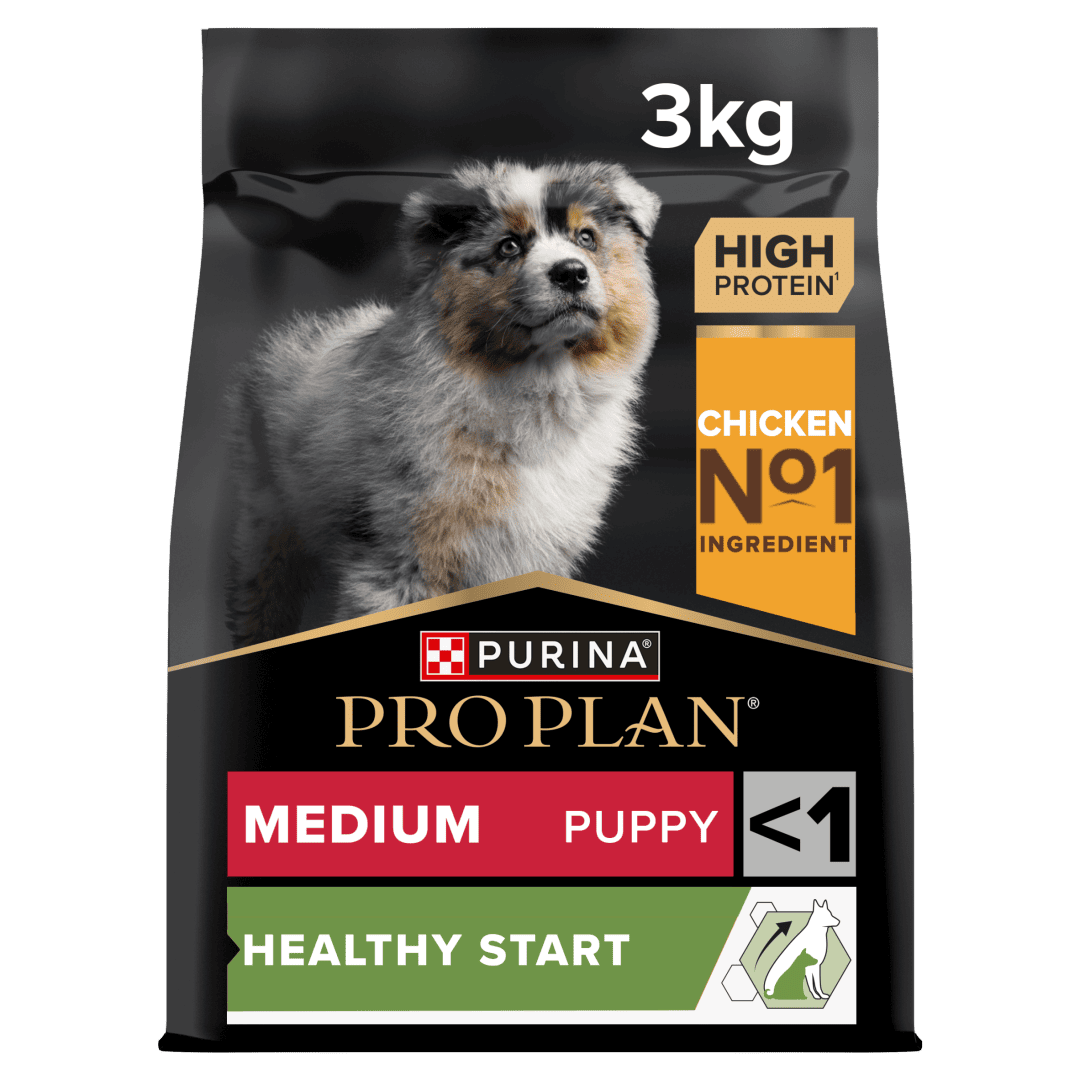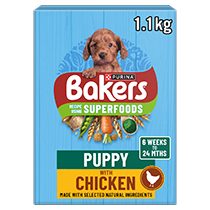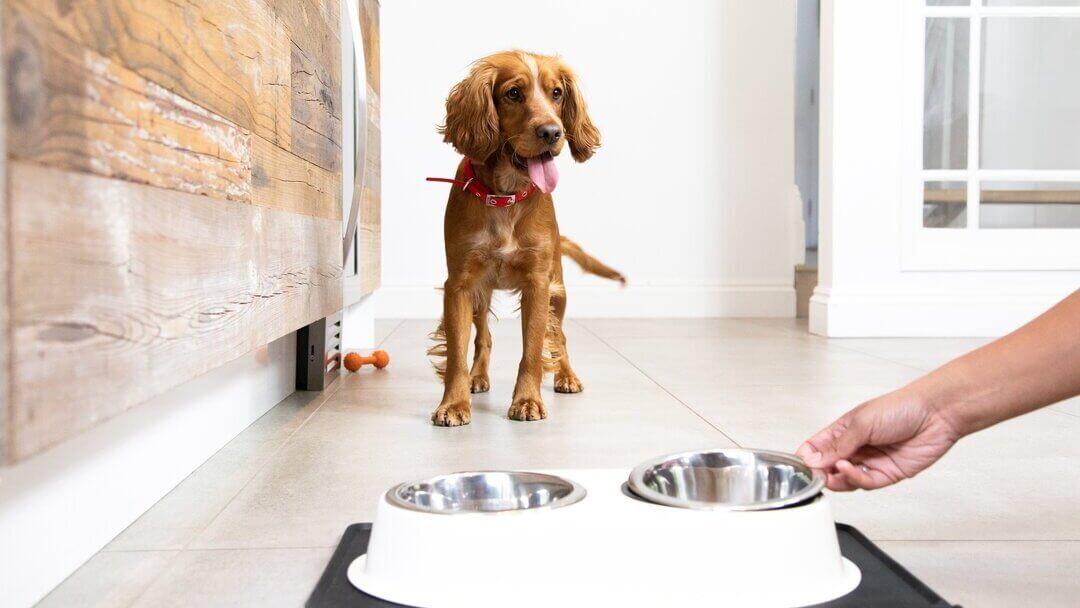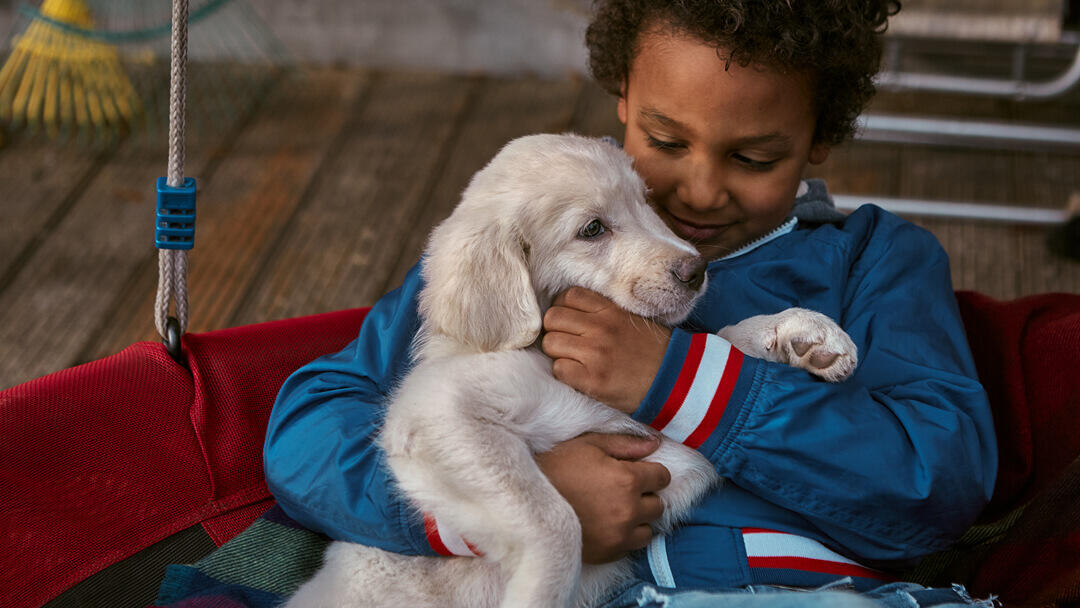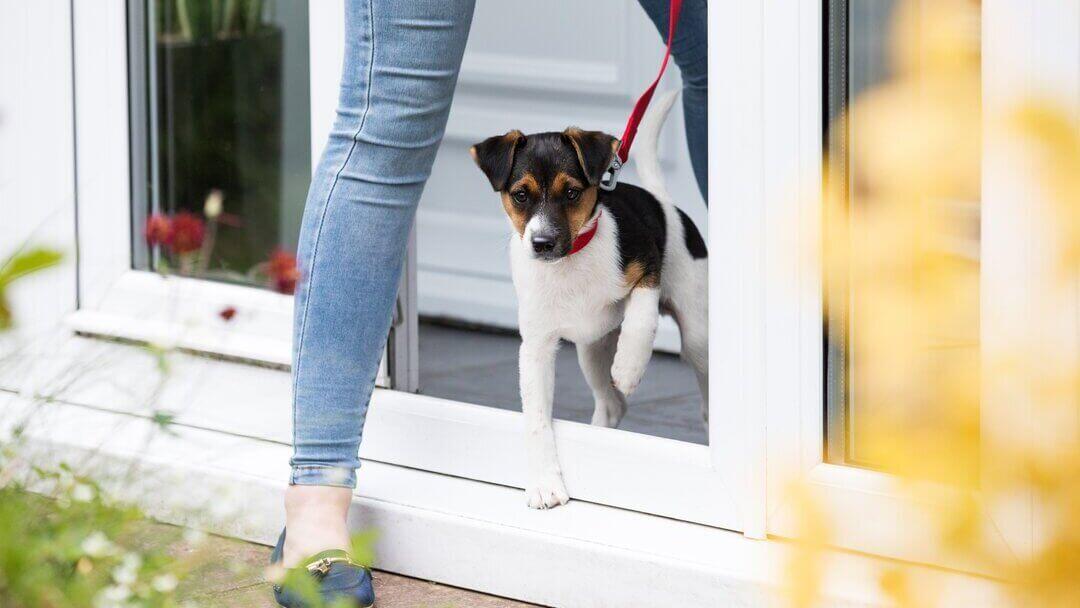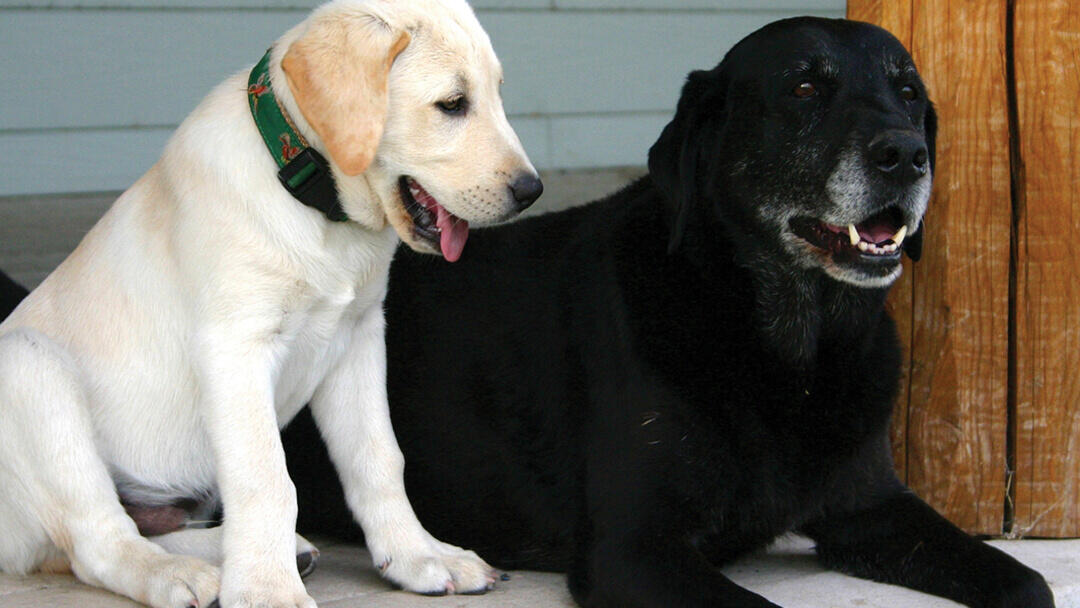Bringing a Puppy Home, Their First Day Home & Tips for the Journey: Our Guide


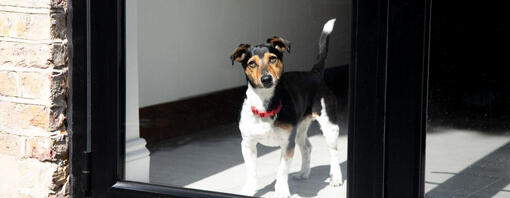
Getting a new puppy is incredibly exciting for all the family, but it is easy to forget that it can be stressful for your new pup. Find out how to deal with your puppy’s first day home with Purina.
Bringing a puppy home is an exciting one for all the family! You are starting out your new life together with the canine best friend you have always dreamt of. Everything is ready to welcome your new puppy and help them settle in straight away.
But there is something many new owners don’t realise. While everyone in the house may be bursting with excitement and desperate to play with the newest member of the family, your puppy’s first day home may look entirely different to them. After all, they’re on their own, away from the mum and their littermates for the first time in their life, in a totally strange place, with people they don’t know. It can be overwhelming for your pup and may be stressful or even frightening for them. Here’s how to help your puppy settle in and find their paws in their new home.
Bringing your puppy home in the car
The first day with your puppy will include needing to bring your puppy home from the breeder or a rescue centre. For most of us, this will be via car. To get your new pup used to car journeys, make sure to see our car travelling tips.
You’ll also need to be prepared when bringing your puppy home in the car for the first time – from thinking about car safety, how your puppy will travel, and having a helping hand to either drive you or keep an eye on your pup. This is their first introduction to their new life and so it’s important to make this journey as straightforward and stress-free as possible – for you and your new arrival.
Arriving home: What to watch out for when you get home from your car journey
The journey may be over for you when you arrive home, but your puppy doesn’t yet know that this is home, a place of safety, security and comfort. For them it is another new experience, that could be just a bit too much on top of everything else.
Also be aware of is that the sudden stillness of the stationary vehicle can wake them and trigger vomiting if they were feeling nauseous… be ready!
Almost certainly, the very first thing they will need to do is go to the toilet so as soon as you arrive home, before you do anything else, is to carry them to your chosen toilet area. This is a great opportunity to kick start your puppy’s toilet training, so make sure you have a treat ready to reward their first toileting success!
Bring your puppy in quietly, only introduce them to the people and dogs they need to meet today – if a meeting can easily be put off until tomorrow, do that, and give your puppy space to decompress and feel more secure.
Introduce your puppy to just one room and the outdoor space they’ll use for toileting, and have someone stay with them all the time, even if they’re asleep so that they don’t wake up and find themselves alone in a strange place.
Ensure if you have other dogs, someone is home with them, and that they’re well exercised, content and settled – if you don’t have someone at home with them, one person should stay in the car with the puppy while the other goes in, lets the dogs out for a pee and then gives them a chance to settle down before ideally putting them into another room.Now sit down, snuggle your puppy and relax – it may be a full-on emotional roller-coaster for the next few weeks, or months, but you’ve started off perfectly and you deserve a rest!
Take things slowly on your puppy’s first day home
No matter how excited everyone is about the puppy’s arrival, keep their homecoming low-key. It’s so easy to everyone to want to shower the new dog with affection, particularly the younger members of the family.
While your new pup is getting used to their surroundings, always supervise excited children and make sure you give your puppy plenty of much-needed time out from all the excitement - and the opportunity to sleep peacefully whenever they want to.
A puppy of this age will need to sleep for upwards of 20 hours a day so can go from active to asleep in seconds! This sleep is vital for their development – both physical and mental – and so, just like a human baby, you need to ensure they have the opportunity for quality rest. Sometimes with active, excitable puppies, you will need to schedule this into their day – as they want to be involved with everything rather than snooze.
On your first day with a new puppy, start off by having them in one room and let them explore in their own time discovering the scents, sights and sounds of this new world. Allow your puppy to settle in gradually and in their own time. This is far better than overwhelming them with enthusiastic games, cuddles and plays while they are still trying to find their paws.
Top Tips
1. Make things familiar for the new puppy
Your new puppy is still a tiny baby. Up until now, their whole life has been spent in one place, a comfortable environment, close to their mother and with their littermates for company.
All the sounds, sights, and smells that were once familiar are gone. This is why trying and making things feel familiar right from your puppy’s first day home is so important. Bringing a piece of veterinary bedding or a blanket back from the breeder that smells of the puppy’s mum and littermates can be comforting and provide them with a touch of home.
2. Allow the puppy to dictate the pace of your interactions
When bringing a puppy home, understand that some puppies might be super-friendly and enthusiastic and want to climb all over you, others may start off more standoffish and prefer to get to know you more slowly.
During the first day, let them decide how much contact they want from you and the rest of the family. Don’t chase your puppy around, and absolutely no grabbing or holding them – especially if they want to move away from you. You want your pup to begin their life with you the way you want them to go on – trusting you, trusting your hands, and trusting everyone in the family.
3. Create guidelines for your family for when your puppy comes home
Before bringing your puppy home it’s useful to agree on a list of house guidelines with your family. It’s important that each member of the family is consistent with these house rules from day one. As an example, a puppy will get easily confused if they are allowed on furniture by one member of the family but not by another.
And while it might seem cute in a baby, you don’t want your puppy to do things now that you are not going to want them to do as an adult. Give them bits of food from the table once and you can expect to be pestered at every mealtime! Or let them jump up now and you can expect that to continue when they are older.
There are other rules to establish for the human members of the family that might not have to do with their interactions with the puppy but in general to help encourage appropriate dog behaviour. Puppies all need to chew to develop their teeth and jaws – plus it is enjoyable for them (which is why you need to give them appropriate things of their own to gnaw at). They have no idea what is ‘theirs’ and what is yours – and they explore the world with their mouths, so you’re asking for trouble if you leave an expensive pair of trainers within their reach! Make sure all family members do not leave tempting, valuable or dangerous things in reach of puppy teeth.
First-day planning and preparation
Household Management:
There are a few things you need to know to be more prepared to bring a puppy home for the first time. Read our planning tips below:
- Plan time off work/chores/errands/trips out – a puppy can’t be left alone for long enough for you to do shopping or other key chores for some considerable time, so organise deliveries, assign tasks to other people, set everything up so that at least one adult will be home at any given time.
- Tidy up – and go around all the rooms your puppy will in, at puppy level, protecting wires, taping or tacking down loose carpet edges, and putting away expensive tasselled rugs or wobbly vases! Puppies explore with their mouths, if it’s in reach, it’s going to be chewed! This isn’t your puppy being bad or destructive – it is their natural behaviour and how they find out about their new environment.
- Puppy pen or room dividers – it’s important your puppy is in the same room as you all the time to start with, but you may need to do tasks without a puppy underfoot. Room dividers or a versatile puppy pen will mean your puppy is safe, but you can fence yourself in around the computer desk, or fence them away from the ironing board or other hazards easily!
- Check the garden – a whole garden may be too big an area for your puppy to feel safe in, or it may offer so much distraction your puppy forgets to toilet out there. Fence off an area for your puppy to act as a toilet, and also (if your garden is big enough) another area as a play area.
- Fence off or cover any dangerous garden substrates, water features or plants – it will take a long time to teach your puppy not to chew poisonous plants or eat that decorative gravel or fall in the pond, so cover it up or fence it off so it is never an option in the first place. Find out more about how you can puppy-proof your garden with our helpful guide.
Keep reviewing the above list as your puppy grows, the things they can reach and the items they’re interested in will change as they get older, braver, and more confident!
Human Management:
- While you will want to show off your new arrival, do not invite visitors to meet your puppy for the first week. Let your puppy become familiar with you, anyone who will be providing care, and your home, and give yourself a chance to learn your puppy’s ‘language’. This may be subtle to start with, and other people around you will be less attentive and can miss signs that they need the toilet or are hungry or sleepy very easily.
- Sit on the floor – instead of towering over your puppy or sitting up on the sofa where they can’t see your face, sit on the floor and play at their level. This will help prevent jumping up from becoming a habit - as they won’t need to do it to interact with you and to get close to your face (which they naturally want to do).
- Your puppy should be curious about the new environment, but if they are not, or if they seem actively scared – let them do whatever it is they need to do to feel comfy and secure. If that’s cuddling up inside your top or in your lap, so be it. Forget rules… Instead always think: “How are you feeling – and how can I make you feel better?”
- Don’t lure your puppy towards things or people they’re worried about. They need to learn that they’re not something to be scared of in their own time. Instead, use food (or toys if they have a favourite) to pair with them. So when they simply see ‘the thing’, you can toss food past them so they’re rewarded for moving away from the scary thing. This makes them feel much safer than being lured closer in to ‘face their fears’ (which just makes them worse), and instead helps build a positive association.
- Don’t bend over/swoop down/grab your puppy – even large breeds are fairly ‘pickup-able’ when very young, but suddenly whooshing them up off the ground is startling for them at best and potentially painful and frightening. We can teach them to be lifted later on, for now, ensure you have their attention, kneel down and encourage them to you before picking them up once they’re close to your body.
- Be prepared to pair every event or new experience with something positive – typically food reinforcers like cheese, chicken, and liver cake – soft, tasty, and easy to eat quickly. Puppies do not build positive associations in their minds without the addition of something actively enjoyable - that an experience ‘wasn’t awful’ is not sufficient!
- Prepare children for the reality of a puppy – they do nibble and bite, they won’t understand the child, they will take time to become a child’s best friend, they’re not a toy, and they are easily scared and easily hurt.
- Expect your puppy to need to sleep in the same room as you for some considerable time to come. Until they feel safe in their new home and begin to become confident, being left on their own is scary. . Read our article on puppy sleeping arrangements for helpful tips on making your puppy more comfortable during the night.
- Don’t be afraid to remove your puppy from a situation that is frightening or scary for them, even if this appears rude to someone else. There is no benefit in your puppy being scared by your neighbour, your best friend or any of your family members – no matter how well-meaning.
Don’t worry if they are a bit wary on their first day
Don’t expect your puppy to come through the door confident and playful. They may do, but far more likely they will be tentative, wary and uncertain as they try to discover what the next phase of their life is going to bring.
On your first day with a new puppy, it’s important to remember that everything has changed for them. Their new life may seem strange, different and potentially scary.
You know that your puppy has ‘come home’, that you will love your new dog and give them everything you can to keep them happy and healthy but right now, your puppy doesn’t know that.
Be patient and give them time to feel safe - and your puppy will settle in much faster.
First interactions between children and the puppy
When bringing your puppy home, ensure children understand how to handle the new puppy with care and respect.
The arrival of a puppy is a really exciting thing – but clinging on to the new arrival or playing rough games can make the puppy worried or fearful.
As the puppy begins to grow up, this respect and thoughtful handling should continue from all the family. You want your dog to grow up wanting to be close to you and be touched by you, and feel happy and safe around all members of the family, so set clear rules for everyone early on.
Please read our guide to introducing puppies and children for more tips.
Spend as much time together as possible on your puppy’s first weeks at home
Bringing a puppy home means dedicating time to your new arrival to help them acclimate to their new surroundings and establish an everyday routine. Booking a few days of holiday will allow you to spend important quality time with your new pet and focus on them 24/7 in those early days.
Dogs always need our company but this is especially important in early weeks of life when puppies learn about the world around them, who these new people are, and who to trust.
Make sure you are there to guide them every step of the way.
Once your puppy feels secure in their new life, they will probably, with training, be able to be left on their own but to start with, they need your company and presence to help them find their feet in this strange new world.
If you find that you are not able to spend as much time with your puppy as you need to, you can start to consider dog walkers, daycare – or just other family member to help you.
Dogs often find your absence difficult to deal with. As an owner, you can better understand how your dog may be feeling when they are left alone. Read more about puppy separation anxiety and how you can help your dog feel more comfortable for those times when you’re not around.
It doesn’t take much to make a puppy feel secure and happy in their new life. But by just taking a step back from the excitement of bringing a new puppy home and realising that for them their whole world has changed and everything is unfamiliar, you can make their homecoming the fun and wonderful event that you want it to be.
All you’ll have to do now is enjoy getting to know each other, playing, training, socialising, having fun and watching your pup grow up to be your best friend!
We hope this article on the first day with your puppy was helpful and prepared you! Next, read about our top tips on introducing your new puppy to other dogs and pets to help your training progress to the next stages.

